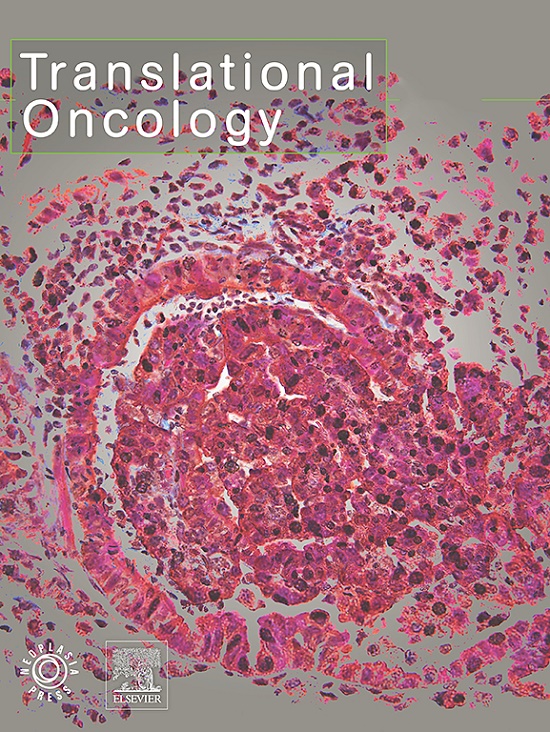Adaptive radiation strategy with V20 limitation associates with survival benefit and lower incidence of symptomatic radiation pneumonitis in stage III NSCLC patients receiving concurrent immunotherapy and thoracic radiation
IF 5
2区 医学
Q2 Medicine
引用次数: 0
Abstract
Objectives: To evaluate the efficacy and the incidence of symptomatic radiation pneumonitis (RP) of the adaptive radiation strategy with V20 limitation in stage III non-small cell lung cancer (NSCLC) patients receiving concurrent immunotherapy and radiotherapy
Materials and Methods: We retrospectively reviewed stage III NSCLC patients received thoracic radiation with or without immunotherapy from January 2015 to September 2024 in the Third Xiangya Hospital. The overall survival (OS), progression free survival (PFS), objective response rate (ORR), and the incidence of symptomatic RP were compared among patients stratified by the sequential of immunotherapy and radiotherapy.
Results: 45 patients received concurrent immunotherapy and radiotherapy with application of the adaptive radiation strategy (the CIR group). 32 patients received simultaneous integrated boost intensity-modulated radiotherapy (SIB-IMRT), 26 patients received 2 to 4 cycles neoadjuvant immuno-chemotherapy before the concurrent immunotherapy and radiotherapy, 7 patients received thoracic radiotherapy with a prescribed dosage of 50 Gy, and 10 patients received radiotherapy with CTV omission. 86.67 % (39/45) patients had a V20 ≤ 20 %. The ORR was 86.67 %. The median PFS of these patients was significantly longer than those received concurrent chemo-radiotherapy followed by immunotherapy (the PACIFIC paradigm, HR, 2.40; 95 % CI, 1.15 to 5.02; log-rank p = 0.013; median, 28.6 vs. 16.1 months p = 0.013). The median OS was not reached. 13.3 % patients in the CIR group experienced grade ≥ 2 RP and the incidence was significantly lower than that of patients received radiotherapy without immunotherapy or concurrent chemo-radiotherapy with immunotherapy consolidation.
Conclusions: The application of adaptive radiotherapy strategies with V20 limitation demonstrated robust antitumor activity and reduced pulmonary toxicity in stage III NSCLC patients receiving concurrent ICIs treatment and thoracic radiation. This treatment modality deserves further validation as a promising therapy in patients with treatment-naive, unresectable, stage III NSCLC.
在同时接受免疫疗法和胸部放射治疗的III期NSCLC患者中,限制V20的适应性放射策略不仅有利于患者生存,还能降低症状性放射性肺炎的发生率。
目的评估同时接受免疫治疗和放疗的III期非小细胞肺癌(NSCLC)患者采用V20限制的自适应放射策略的疗效和症状性放射性肺炎(RP)的发生率 材料与方法:我们回顾性研究了2015年1月至2024年9月在湘雅三医院接受胸部放射治疗或未接受免疫治疗的III期NSCLC患者。结果:45名患者同时接受了免疫治疗和放疗:45名患者同时接受了免疫疗法和放疗,并应用了自适应放射策略(CIR组)。32名患者接受了同步综合增强调强放疗(SIB-IMRT),26名患者在同步免疫治疗和放疗前接受了2至4个周期的新辅助免疫化疗,7名患者接受了规定剂量为50 Gy的胸部放疗,10名患者接受了省略CTV的放疗。86.67%(39/45)的患者 V20 ≤ 20%。ORR为86.67%。这些患者的中位生存期明显长于同时接受放化疗和免疫治疗的患者(PACIFIC 范例,HR,2.40;95 % CI,1.15 至 5.02;log-rank p = 0.013;中位 28.6 个月 vs. 16.1 个月 p = 0.013)。未达到中位生存期。CIR组13.3%的患者出现≥2级RP,其发生率明显低于未接受免疫治疗的放疗患者或同时接受免疫治疗巩固化疗-放疗的患者:结论:在同时接受 ICIs 治疗和胸部放疗的 III 期 NSCLC 患者中,应用限制 V20 的适应性放疗策略显示出强大的抗肿瘤活性,并降低了肺毒性。这种治疗模式作为一种有前景的疗法,值得在未接受治疗、无法切除的III期NSCLC患者中进一步验证。
本文章由计算机程序翻译,如有差异,请以英文原文为准。
求助全文
约1分钟内获得全文
求助全文
来源期刊

Translational Oncology
ONCOLOGY-
CiteScore
8.40
自引率
2.00%
发文量
314
审稿时长
54 days
期刊介绍:
Translational Oncology publishes the results of novel research investigations which bridge the laboratory and clinical settings including risk assessment, cellular and molecular characterization, prevention, detection, diagnosis and treatment of human cancers with the overall goal of improving the clinical care of oncology patients. Translational Oncology will publish laboratory studies of novel therapeutic interventions as well as clinical trials which evaluate new treatment paradigms for cancer. Peer reviewed manuscript types include Original Reports, Reviews and Editorials.
 求助内容:
求助内容: 应助结果提醒方式:
应助结果提醒方式:


